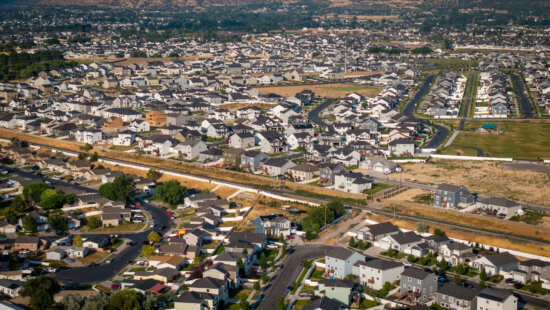Politics
Report: Park City increasingly a wealthy enclave without policy intervention
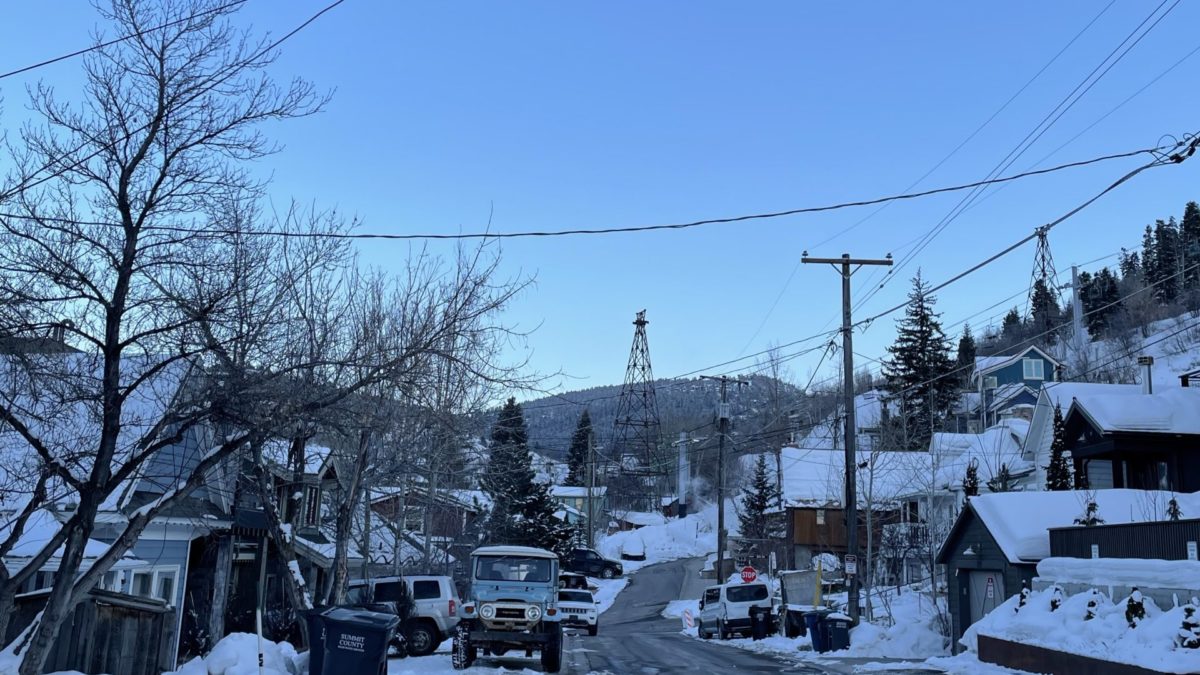
Park City is the most expensive housing market in Utah. Photo: TownLift
PARK CITY, Utah — Every five years, the State of Utah requires the Park City Housing Team to update their Housing Needs Assessment.
The last assessment was completed in 2017, “and was the foundation of the current housing goal,” according to a staff report for Thursday’s Park City Council meeting.
Park City’s current objective is to create 800 affordable housing units in city limits by 2026, an objective set by the city council in 2016.
133 affordable units have been built in Park City since 2016, according to a Feb. 2021 staff report.
The city hired James Wood and Associates to complete the newest assessment, which was released this week.
The report highlights the desperate need for affordable workforce housing and provides key figures about Park City’s employee base ~ 8,800 workers commute from outside Summit County every day.
A summary of Park City’s Housing Needs Assessment 2021:
Park City is the most expensive housing market in Utah.
The median sales price for a single-family home was $2.25 million in 2021. In Salt Lake County, the median sales price was $550,000 — roughly 25% of the price in Park City.
32.6% of all housing units (10,440 total) in Park City are occupied.
Vacant seasonal and recreational housing units have nearly doubled to 6,750 units since 2000, while during the same time frame, renter-occupied units have increased by a total of 124 to 1,169 units.
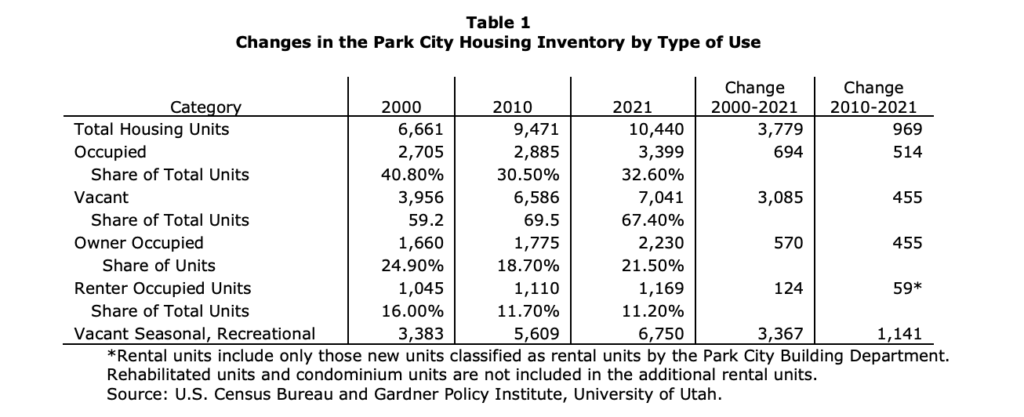
Since 2010, Park City Municipal has issued 970 building permits, half of which were issued in 2020 and 2021. Single-family homes dominate.
The annual household income required to purchase a median-priced single-family home in Park City is $500,000, which is five times the median income.
A $200,000 annual household income is required to purchase a median-priced condo.
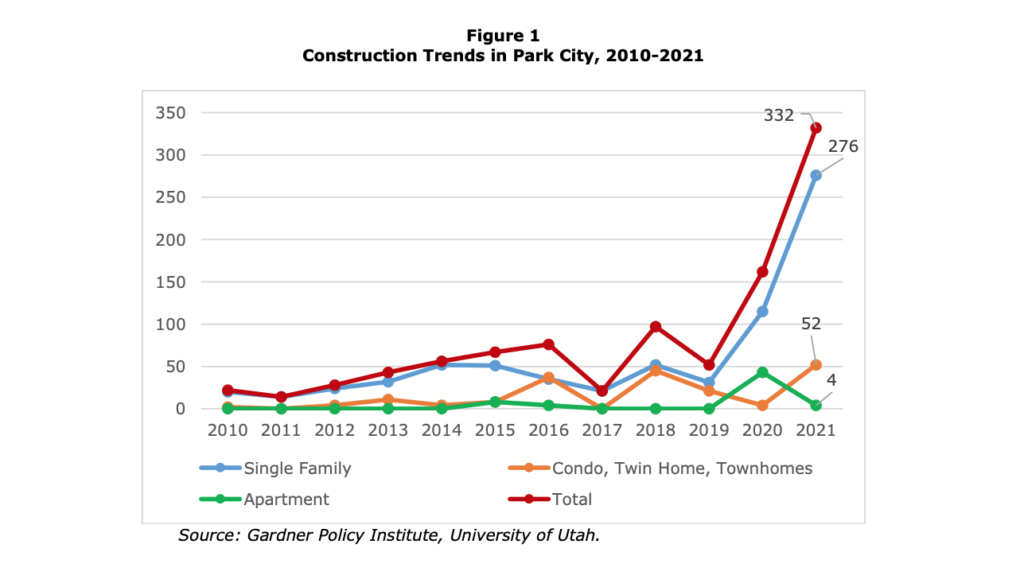
The report says that without policy intervention, Park City “will increasingly become an enclave for the super-rich.”
PC is the only city in Utah where the number of jobs (11,000) outnumbers the population (8,500). That dynamic requires “extraordinary levels of commuting by relatively low-wage workers.
“The lack of affordable housing contributes to the local labor shortage, the high cost of local services, and reduced air quality,” according to the assessment.
Current affordable housing stock provides a home for 6% of the city’s workforce.
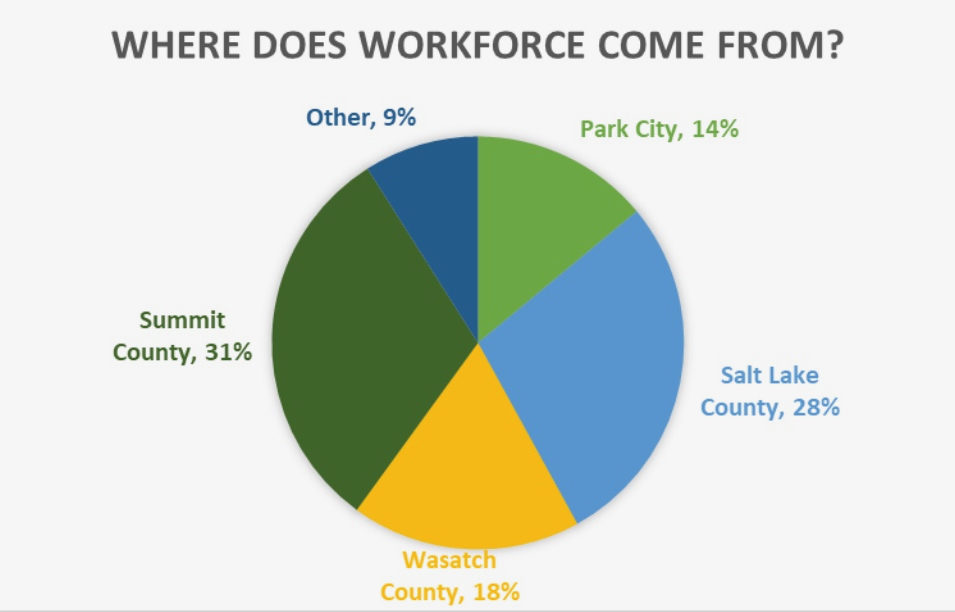
The report states that “a large share of the commuters” earn less than $40,000 annually, and predominantly work in either retail, food service, recreation, or entertainment.
16% of Park City Municipal Corporation employees live within city limits, almost mirroring the 15% of the general workforce that lives in PC.
Roughly one in five renters in PC are paying more than 50% of their income for housing and utilities. “It’s noteworthy that these 250 households receive no housing assistance,” the report says.
Summit County holds the highest percentage of short-term rentals (over 6,000) of any county in the state. Park City hosts roughly half of those units that have been documented.
Summit County has grown older, more wealthy, and less diverse in recent years, which heavily weighs on Area Median Income (AMI), a tool policymakers use to calculate who deserves affordable housing.
The James Wood analysis on AMI says:
Park City officials have recognized that the area median income (AMI) does not “accurately reflect the financial reality of those in need of affordable housing.”
For tax credit applications, HUD uses an AMI for Summit County of $120,800. A high AMI leads to higher rental rates for many government assisted projects, since approved rental rates are tied to income.
The theory is higher-income households can afford higher rents. Unfortunately, in a resort community, the relationship between AMI and rents breaks down. Resort communities require a large moderate to low-wage workforce.
Another option for affordable housing is a metric called Workforce Wage (WFW), which could be used instead of AMI. More from the report:
The glaring difference between AMI and WFW is illustrated by an estimate of the weighted average wage for the five major employment sectors in Summit County (Park City data not available).
These five sectors account for nearly two-thirds of the county’s employment and are also the sectors most likely to employ commuters.
The weighted average wage in 2020 was $38,197, a wage at only 34% of Park City’s median income and 32% of HUD’s AMI of $120,800.
Using a rental rate based on the AMI, a one-bedroom apartment at 50% AMI would have a monthly rental rate of $1,120.
This one-bedroom apartment would require an income of $44,800 (rent and utilities at 30% of income), an income 17% higher than the average wage of $38,197.
—
The Park City Housing Team is pushing for 800-1000 new affordable housing units over the next five years in response to the report.
The city council is discussing the matter at their meeting on Thursday (Zoom).

















